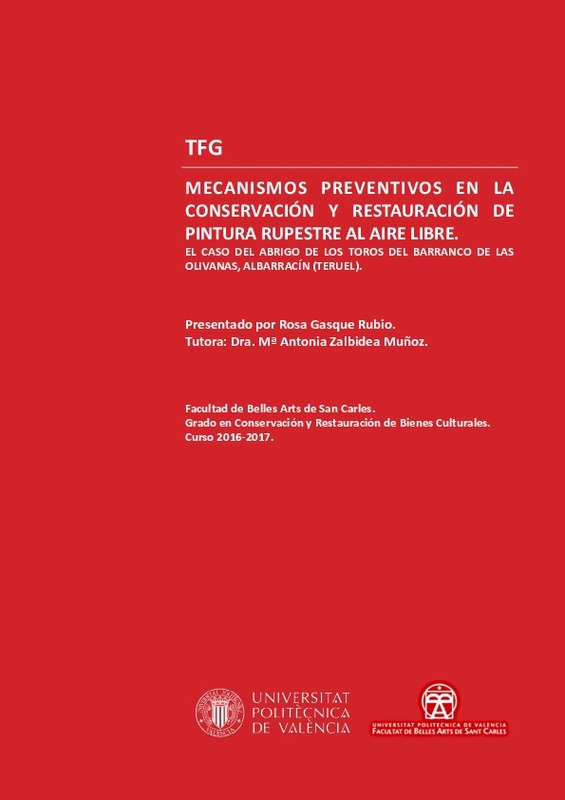JavaScript is disabled for your browser. Some features of this site may not work without it.
Buscar en RiuNet
Listar
Mi cuenta
Estadísticas
Ayuda RiuNet
Admin. UPV
Mecanismos preventivos en la conservación y restauración de pintura rupestre al aire libre. El caso del Abrigo de los Toros del Barranco de las Olivanas, Albarracín (Teruel)
Mostrar el registro completo del ítem
Gasque Rubio, RM. (2017). Mecanismos preventivos en la conservación y restauración de pintura rupestre al aire libre. El caso del Abrigo de los Toros del Barranco de las Olivanas, Albarracín (Teruel). http://hdl.handle.net/10251/98326
Por favor, use este identificador para citar o enlazar este ítem: http://hdl.handle.net/10251/98326
Ficheros en el ítem
Metadatos del ítem
| Título: | Mecanismos preventivos en la conservación y restauración de pintura rupestre al aire libre. El caso del Abrigo de los Toros del Barranco de las Olivanas, Albarracín (Teruel) | |||
| Autor: | Gasque Rubio, Rosa María | |||
| Director(es): | ||||
| Entidad UPV: |
|
|||
| Fecha acto/lectura: |
|
|||
| Resumen: |
Observando la problemática de la conservación y restauración del arte rupestre al aire libre, se concluye en los principales estudios que su intervención no solo debe basarse en métodos teóricos y poco invadidos, sino ...[+]
According to all the studies that have been done, researchers conclude that rock art conservation must be based in theoric and less invasive methods, focused in preventive mechanisms. It allows to manage the conservation ...[+]
|
|||
| Palabras clave: |
|
|||
| Derechos de uso: | Reconocimiento (by) | |||
| Editorial: |
|
|||
| Titulación: |
|
|||
| Tipo: |
|
recommendations
Este ítem aparece en la(s) siguiente(s) colección(ones)
-
BBAA - Trabajos académicos [5093]
Facultad de Bellas Artes







